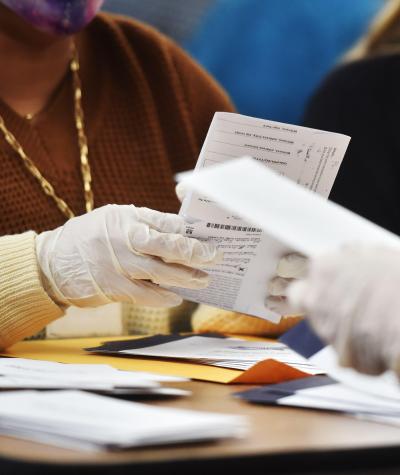Embracing false narratives and relying on disinformation about the integrity of our country’s electoral system, partisan actors across the country have pushed to make hand counting the primary method of tabulating ballots this November.
Many of these claims have focused on the reliability of vote tabulators, even though evidence suggests that they are more accurate than hand counting.
Hand counting ballots is neither fast nor accurate. As the Bipartisan Policy Center has noted, people are inferior to machines “at completing rote, repetitive tasks.”
Replacing voting machines with hand counts as the main way of counting votes would weaken the electoral system by introducing a greater degree of human error into the process.
This would increase the time needed to process ballots, count votes and report accurate election results, increasing opportunities for politicians who want to sow distrust in our elections and rig the rules of the game to work in their favor.
After the state's sixth largest county announced its plan to switch to hand counting paper ballots for the November midterm elections, Nevada’s Secretary of State established regulations for hand counting ballots.
In August, Campaign Legal Center (CLC) submitted testimony to the Nevada Deputy Secretary of State for Elections, Mark Wlaschin, warning of the myriad issues that a full hand count system would likely introduce and emphasizing the comprehensive procedures the state already has in place to verify election results.
In close races, it may not be possible to project or report results until every ballot has been counted. But in every case, accuracy is more important than speed because it preserves people’s trust in our democracy.
Delays and uncertainties can fuel harmful rhetoric among candidates and public figures and undermine the perceived legitimacy of the electoral system.
Bad faith actors can capitalize on voters’ expectation that election results will be released quickly by arguing that any delay is suspicious and evidence of broader issues — with no basis other than delays, which would be exacerbated by hand counting.
County election officials have numerous important administrative duties in the days immediately following Election Day, including canvassing and certifying election results. A hand counting requirement would not only delay the reporting of results, but it would also severely disrupt county officials’ ability to fulfill their critical responsibilities to conduct the election securely and accurately.
Most states across the country already have tried and true tools that ensure the accuracy of election results.
One critical method is a post-election audit, which verifies that voting equipment and procedures are yielding the correct outcome. The localities tallying votes are required to randomly hand check selected voting machines to ensure that the paper record matches the vote total that was reported.
Many places also utilize risk limiting audits, a type of post-election audit that relies on statistical techniques to determine — based on factors like a jurisdiction’s size and the election’s closeness — how many ballots must be audited to achieve confidence in the election’s outcome.
In a democracy, politicians do not pick their voters; instead, voters choose their leaders and decide the outcome of elections. Every policy and practice in place before and after ballots are cast must be in pursuit of this basic democratic value, which is why hand counting should only be used in specific circumstances rather than as the default method for counting ballots.

